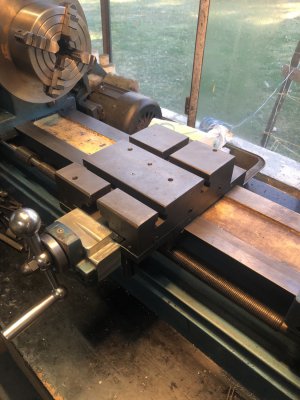If I understood your original post, you wish to make a new, improved lead screw/thrust bearing/ hearing housing assembly for your lathe. I wouln't worry about reverse engineering the original but rather obtain my dimensions from the mating parts to my new and improved.
Usually, the lead screw is centered between the two dovetails, taking into account the gib. Rather than measuring the cross slide itself for the dovetail spacing, I would measure its mating dovetail distance. This can be done by placing two dowel pins in the dovetails so they are in contact with the base and sides of the dovetail. with a careful measurement and a little trigonometry, the dovetail geometry can be defined. From that, the location of the lead screw axis relative to the fixed dovetail can be defined. A tight fitting pin or screw with turned down neck, as suggested above can be inserted in the screw holes and their location relative to the dovetail can be defined. The vertical position of the lead screw relative to the mounting holes can be determined from the original part. The thrust bearing housing usually has oversized mounting holes to prtmit some final adjustment. It might help to make a simple plate to determine fit and adjust your design from that.

